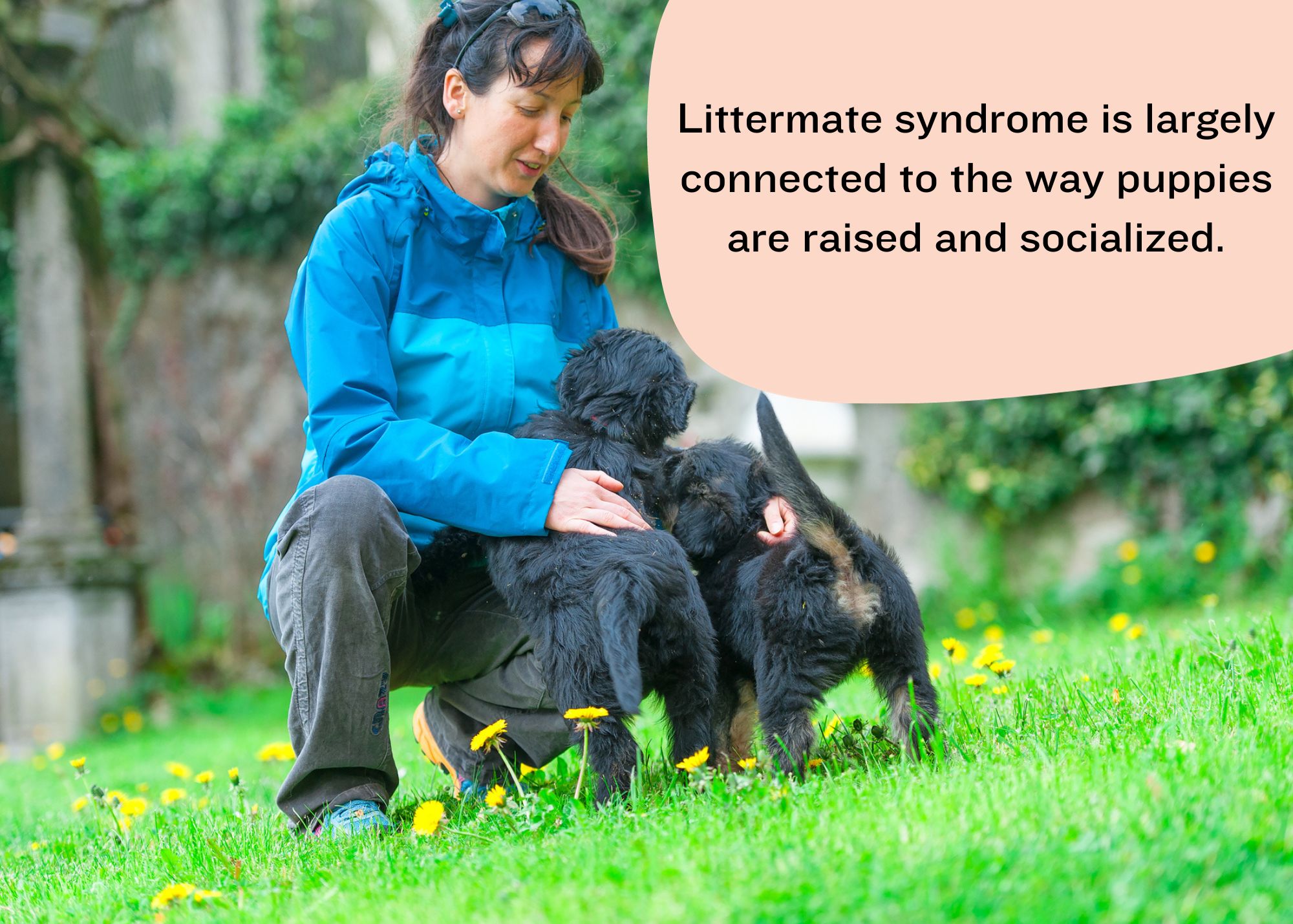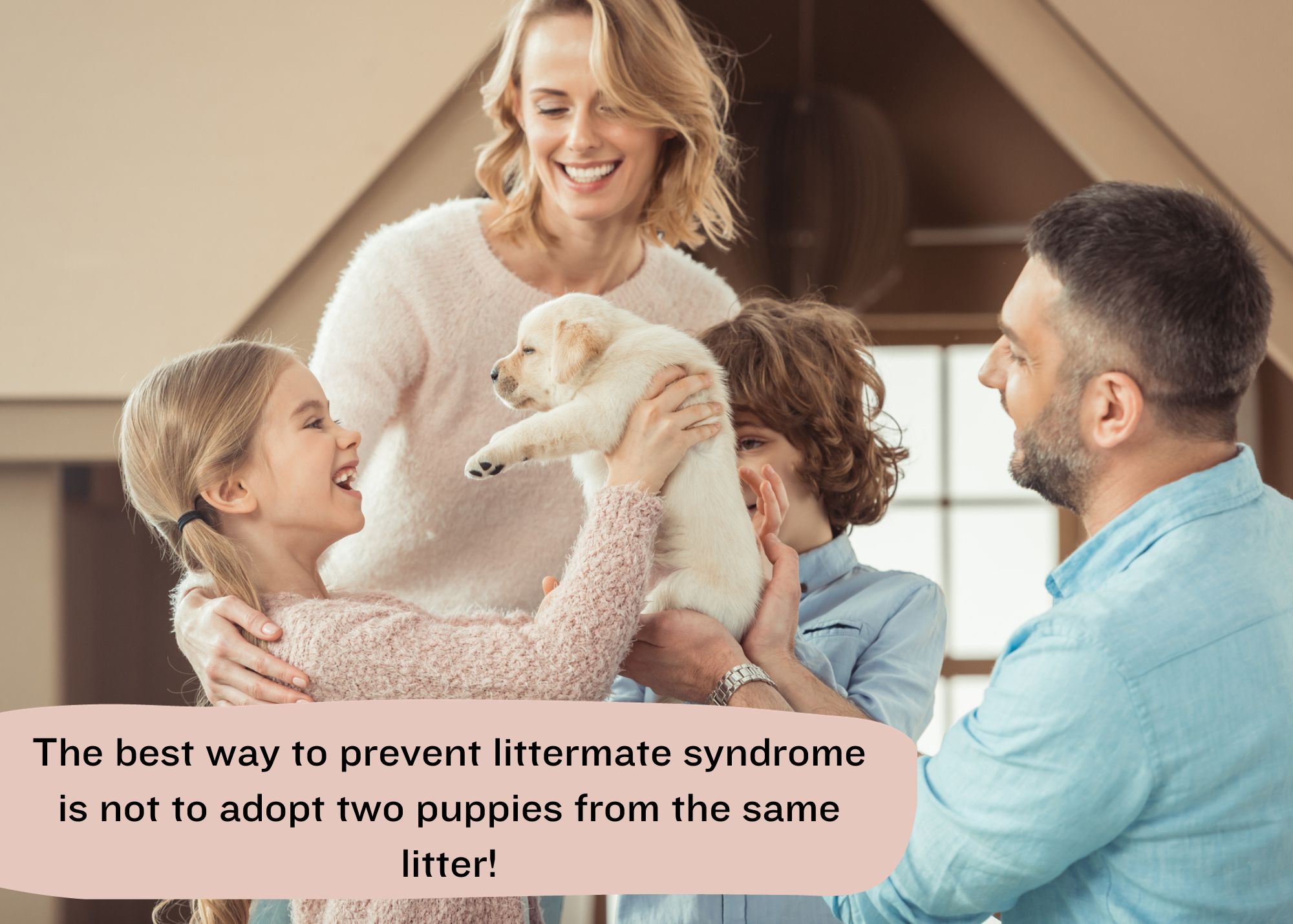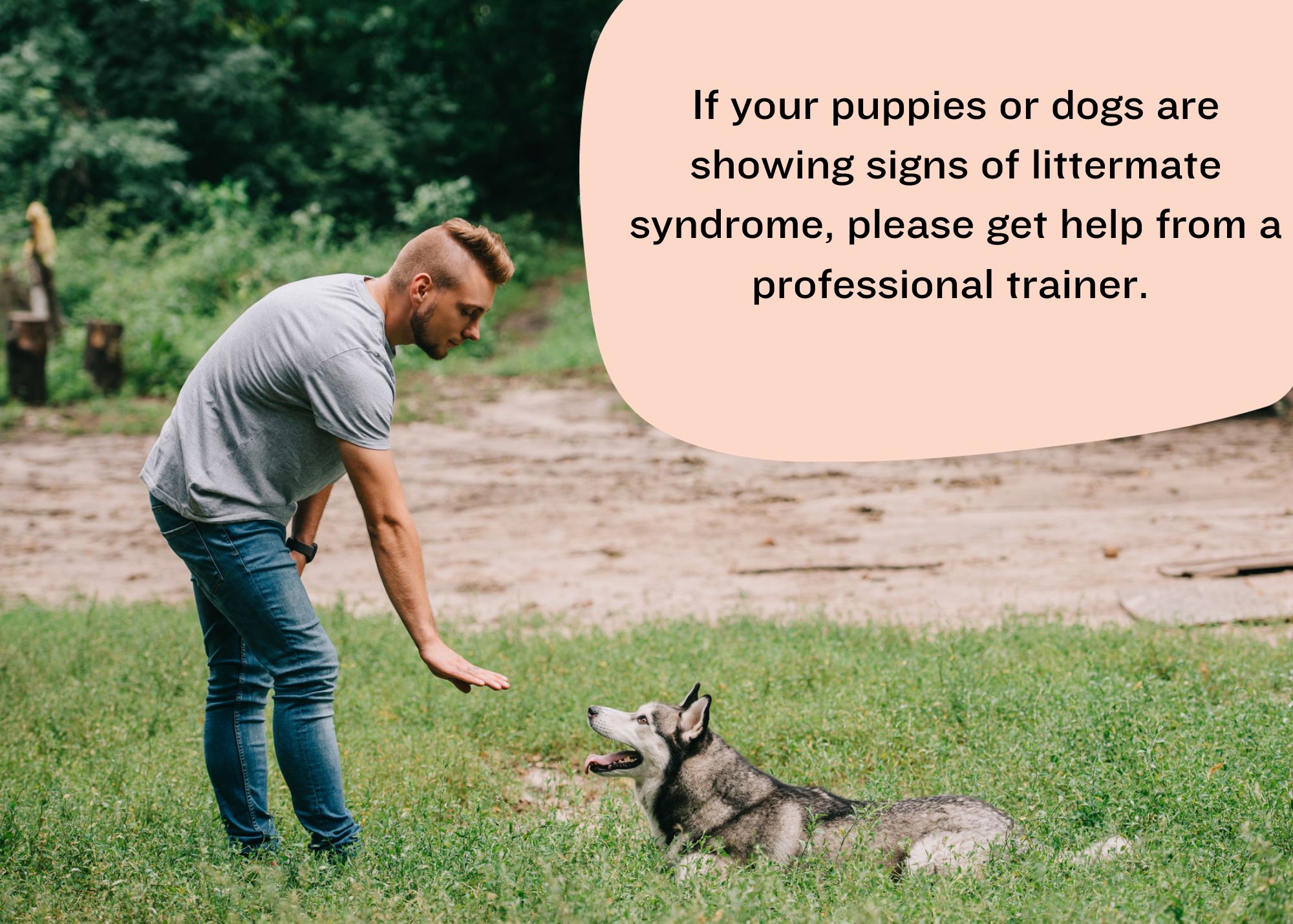Have you heard of littermate syndrome but aren’t quite sure what it is?
Perhaps you’ve considered buying two dogs from the same litter and were advised not to purchase littermates because of littermate syndrome.
Or, maybe you or someone you know owns two dogs from the same litter (or similar ages) and is experiencing behavior problems between the two dogs.
Maybe you’ve heard that littermate syndrome isn’t real.
What is littermate syndrome? Do your dogs have littermate syndrome? Should you adopt littermates? And is littermate syndrome just a myth?
In this article, the team at Infinity Pups puts their years of knowledge to use to answer your questions about littermate syndrome!
Alright, dog lovers, let’s get started!
What is Littermate Syndrome?
Also known as littermate dependency, this is a set of unwanted behaviors and patterns that occur when two puppies from the same litter (or of similar age) are raised together.
To sum it up, puppies raised in the same home can become dependent upon each other in unhealthy ways that negatively affect their development, temperament, and capacity for work.
However, there is no scientific evidence to prove that littermate syndrome exists. Unwanted behaviors in dogs, such as aggression, anxiety, and sibling rivalry, have a variety of causes.
Rather, littermate syndrome is more about how the dogs are raised and treated.
“...The problem isn’t the dogs. The problem is [the owner's] ability to address their individual needs,” says Tim Steele of behaviormattersacademy.com.
Unfortunately, the term littermate syndrome can be unfairly used to describe dogs' behavior problems just because they are siblings.
The label “littermate syndrome” can cause dog owners to think their only option is to rehome one of their dogs. Instead, dog owners should get help from a canine behaviorist and address the negative behaviors in each dog.

Yes, negative behavior patterns often develop when two dogs from the same litter are raised in the same home. However, negative behavior patterns can develop between any two dogs in the same home.
To illustrate this point, imagine someone named Sam asking their friends for advice with their dog. Sam owns one dog, and the dog has behavior problems.
Sam’s first friend responds, “The real problem is that you own a dog. Getting rid of your dog is the only way to solve the problem.”
Sam’s second friend says, “It sounds like you need some help from a canine expert. With more training and resources, you can correct this unwanted behavior in your dog.”
Which friend gave better advice? Clearly, the second friend!
In the same way, owning two dogs from the same litter isn’t the real problem of “littermate syndrome.” The real problem is unwanted behavior patterns in each dog, which often stems from dog owners not having enough time and energy to properly train two dogs. And that can be addressed with help from experienced dog trainers.
What are the Signs of
Littermate Syndrome?
Some examples of littermate syndrome or littermate dependency are:
- Puppies become co-dependent and can experience separation anxiety when apart from each other.
- One puppy becomes bold, and the other puppy becomes excessively shy
- Puppies may fail to bond properly with their owners
- Puppies may be fearful in new situations or when meeting new dogs
- Puppies may fight each other or show aggression as they mature
Littermate syndrome is largely connected to the way puppies are raised and socialized.

Puppies are more open to new experiences before they are 12 weeks old. If puppies are constantly together as they grow and develop, they will have a difficult time functioning independently.
Puppies need their own training sessions, walks, and socializing. Treating each puppy as an individual is essential for:
- Building confidence in the puppy
- Helping them learn to recognize cues from humans (instead of their littermate)
- Bonding properly with their owner
- Developing and functioning independently
Which Dogs Can Be Affected
by Littermate Syndrome?
Littermate syndrome usually occurs between two puppies from the same litter; however, it can occur between non-sibling puppies that are less than six months apart.
Can adult dogs have littermate syndrome?
Yes, although it probably won’t be labeled littermate syndrome. Littermate syndrome symptoms include separation anxiety, aggression, and fearfulness, and dogs at any age can exhibit these symptoms.
Does Littermate Syndrome Go Away?
No. If it's not addressed, littermate syndrome will worsen over time. However, with proper training and intervention, you can help correct the unwanted behaviors of your dogs.
If you think your dogs or puppies have littermate syndrome, ask your vet to recommend a trusted dog trainer or canine behaviorist near you.
How Can I Prevent Littermate Syndrome?
If you are reading this article, perhaps you are considering adopting two puppies from the same litter. In that case, high-five to you for doing some research beforehand!
The best way to prevent littermate syndrome is not to adopt two puppies from the same litter!

While not every set of littermates adopted into the same home develop littermate syndrome, it is a risk that many dog trainers and canine behaviorists advise against.
Guide dog organizations do not allow their puppies to be placed in homes together, because even experienced dog trainers can struggle to prevent littermate syndrome.
Yes, having puppy siblings sounds fun, but there are some real difficulties to consider beyond littermate syndrome.
Remember, littermate syndrome is really referring to the way the puppies are trained and raised.
This means you need to make sure you have enough resources to care for and train two dogs properly.
One obvious consideration is the higher cost of owning two puppies. Dog owners can spend between $610 - $3,550 a year on their dog, depending on the size of the dog and the cost of living in their area. With two dogs, you’ll be spending twice that amount.
But negative behavior patterns and money aren’t the only considerations.
Two puppies will also take a lot more time!
- Twice the training (yes, they need separate training sessions)
- Twice the walks
- Separate playtime with owners
- Separate socialization experiences
- Separate crates, food bowls, etc.
The bottom line? Puppies do better when they are each placed in their own home.
If you want two dogs, make sure they are at least six months apart, or commit to the task of raising the two dogs as if they were separate.
Treating Littermate Syndrome
Yes, littermate syndrome can be treated! It takes a lot of hard work and patience, but it can be done.
If your puppies or dogs are showing signs of littermate syndrome, please get help from a professional trainer.

Your dog trainer will work with you to re-train your dogs. Some of the training may include:
- Putting puppies in separate crates and gradually moving the crates further apart
- Feeding them in separate rooms
- Taking the puppies on separate walks with separate handlers
- Slowly working up to separate training sessions with each puppy
- Teaching puppies or dogs the “place” command
- Enrolling them in separate training classes
Conclusion
Littermate syndrome is a term used to describe unwanted behavioral patterns that occur between two dogs of similar ages. They may or may not be from the same litter.
While it's tempting to adopt two puppies from the same litter because they are so cute together, it comes with real risks and isn’t recommended. Puppies do best when they are placed in separate homes.
Remember, the real problem of littermate syndrome is how the puppies are raised and trained.
If you have two dogs with unwanted behaviors, you don’t necessarily have to rehome one of your dogs.
Find a trusted canine behaviorist near you and get started with training.
With lots of hard work and patience, you can solve littermate syndrome!








